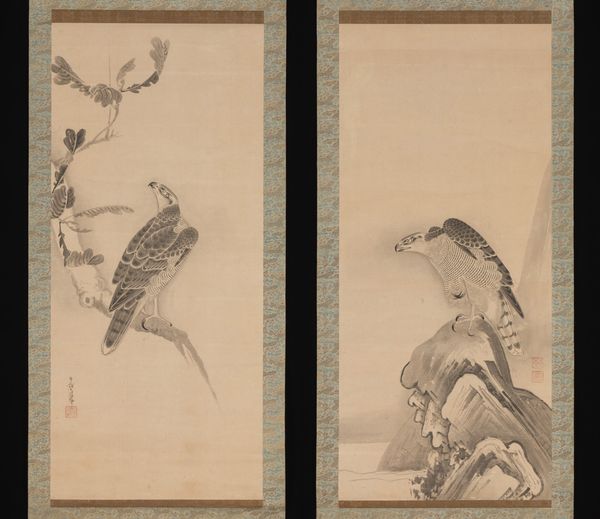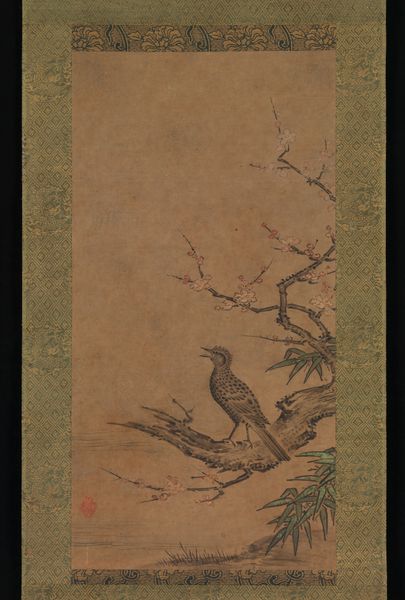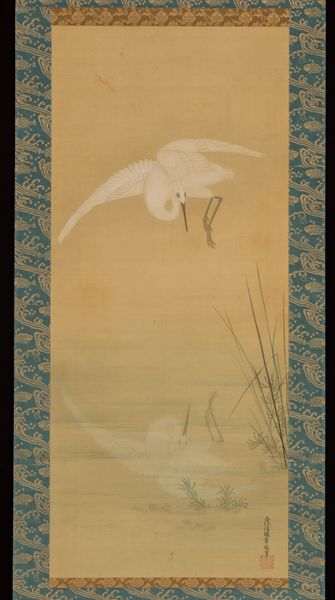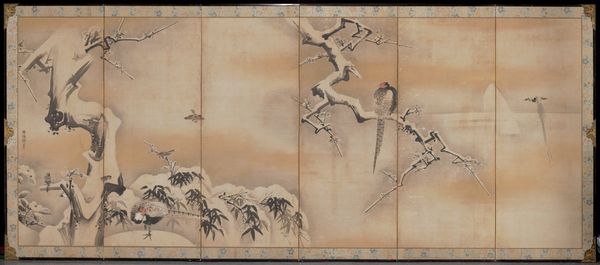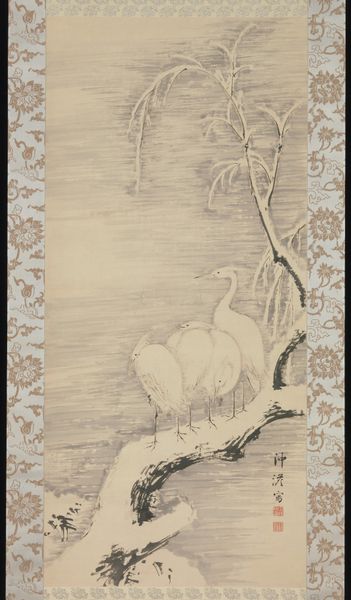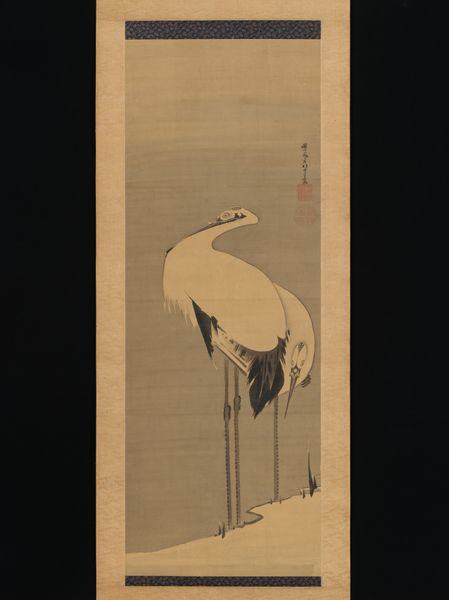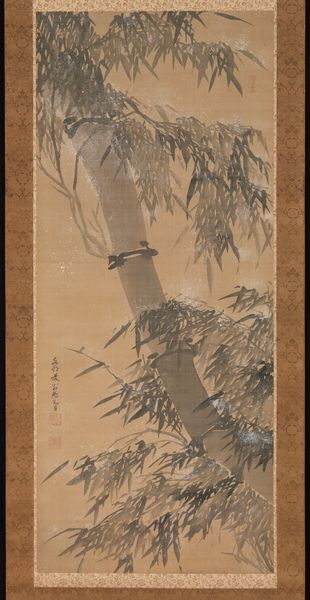
painting, ink
#
painting
#
asian-art
#
landscape
#
japan
#
figuration
#
ink
#
orientalism
Dimensions: Image: 52 3/4 × 22 1/16 in. (134 × 56 cm) Overall with mounting: 90 3/16 × 28 in. (229 × 71.1 cm) Overall with knobs: 90 3/16 × 30 1/4 in. (229.1 × 76.8 cm)
Copyright: Public Domain
Soga Shōhaku painted these two hanging scrolls, rendered in ink on paper, during the 18th century in Japan. Here, the elegant crane stands as a potent symbol, deeply embedded in East Asian cultures. In this diptych, we observe two different poses, each holding symbolic weight. On the left, the crane stands tall, beak open in a call—a symbol of vigilance and longevity. To the right, a crane rests, nestled against bamboo. In Chinese and Japanese art, the crane's association with immortality harkens back to ancient beliefs in the Taoist and Shinto traditions. These motifs—the crane, the bamboo—echo through time. Think of earlier depictions in ink paintings, where similar images evoked serenity and a connection to the natural world. What is striking is how these symbols adapt, carrying ancestral meanings while reflecting the artists' contemporary cultural and emotional landscapes. The image resonates with us on a deeper level. The serene poses of the cranes perhaps evoke a subconscious longing for tranquility, for a simpler, more connected existence.
Comments
No comments
Be the first to comment and join the conversation on the ultimate creative platform.
